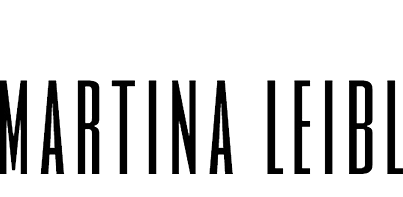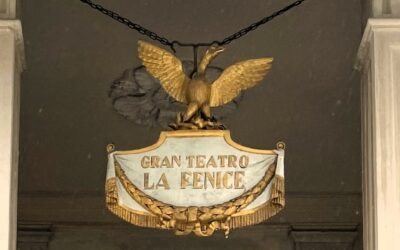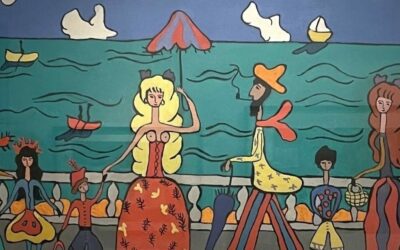The Magic of Drawings
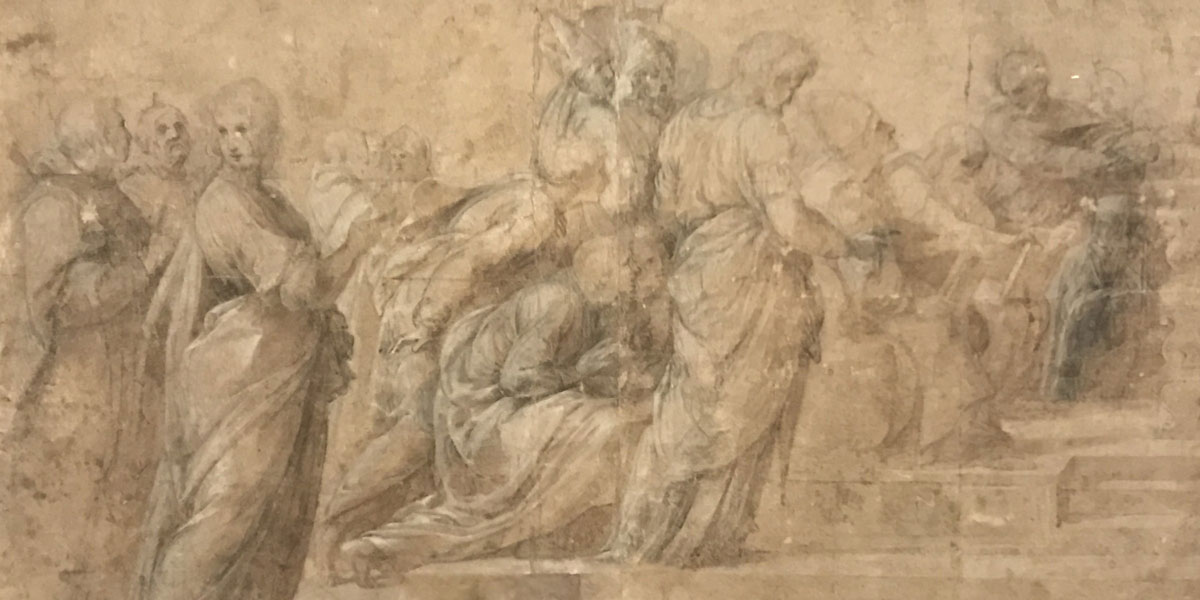
Just recently I experienced again in an exhibition at the Albertina in Vienna the attraction and fascination of the drawings of the greatest painters of the Italian Renaissance. Maybe unusual to some, however for me their works radiate a special intensity, aesthetics, richness and beauty and evoke delightful moments and emotions.
I especially adore the drawings of Raffaello Sanzio, usually known as Raphael, painter and architect, and along with Leonardo da Vinci and Michelangelo he is one of the most important masters in art history.
Studies and sketches
Either figure study, idea sketch or modello – Raphael or da Vinci always drew for a specific purpose, with a view to and as preliminary drawing for the following execution of a painting or architectural work. Image motifs such as specific gestures, physiognomies or the design of draperies as a means of expression for the indiviual characterization of their figures thus took shape.
Such drawings, often compiled in a so-called ‘sketchbook’, are probably among the most private artificial expressions of these genii. This unobserved scribbling, testing and discarding captured in it provides the viewer with a unique proximity to the artist’s creative process, his experiencing, thinking and designing.
The light-dark-drawing on colored, grounded paper
Since the early 14th century the use of prepared paper material in different shades of blue, grey, brown and red has found its way into art.
Essentially, a paper primer consisted of three ingredients: a filler – residues of burnt, finely ground bones, iron oxide pigments in the desired color, and animal glue.
Why was this indispensable?
Primarily, paper was grounded for functional reasons. Only in this way the usage of the that time common metal pins was possible, the metal could rub off (let us come back on this in detail later).
And this preparation of paper was what allowed the development of the technique of the so-called ‘light-shadow-drawing’ or ‘chiaroscuro’.

Thereby the color of the chosen paper formed a middle tone from which one could work into the dark, but also into the light. With the respective drawing tool rich tonal gradations could be achieved. High-contrast drawing was thus ideal for studying the impression of three-diemensionality and opened up new plastic possibilities for the artist.
Artistic devices

The most familiar writing and drawing instrument, the pencil, goes back to the older lead stylus, already known in antiquity, and which represented one of the most important devices used by artists like Raffael.
This metal pin had a tip of lead or lead alloys such as tin. When drawing, this left a material residue, creating lines.
With drawing instruments such as the feather or pen which absorbs liquid colors, the painter, in sequel, carried out its work.
Among the oldest tools of this type were pens of bamboo or reed. Around the 6th century they were replaced by diagonally cut quill feathers from geese or swans; these were more flexible and produced softer, more elastic lines.
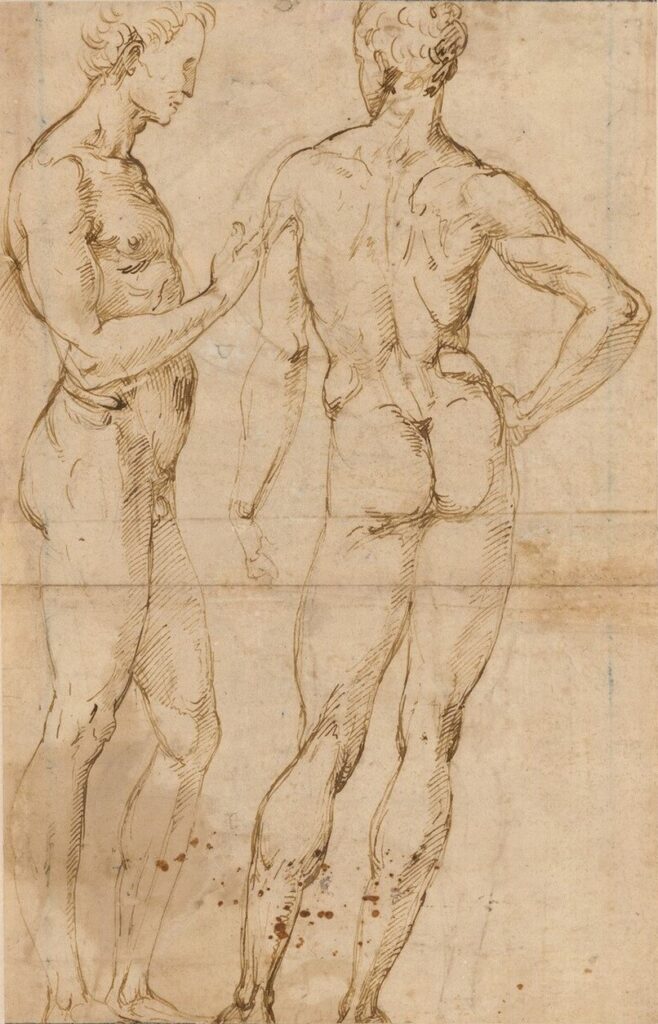
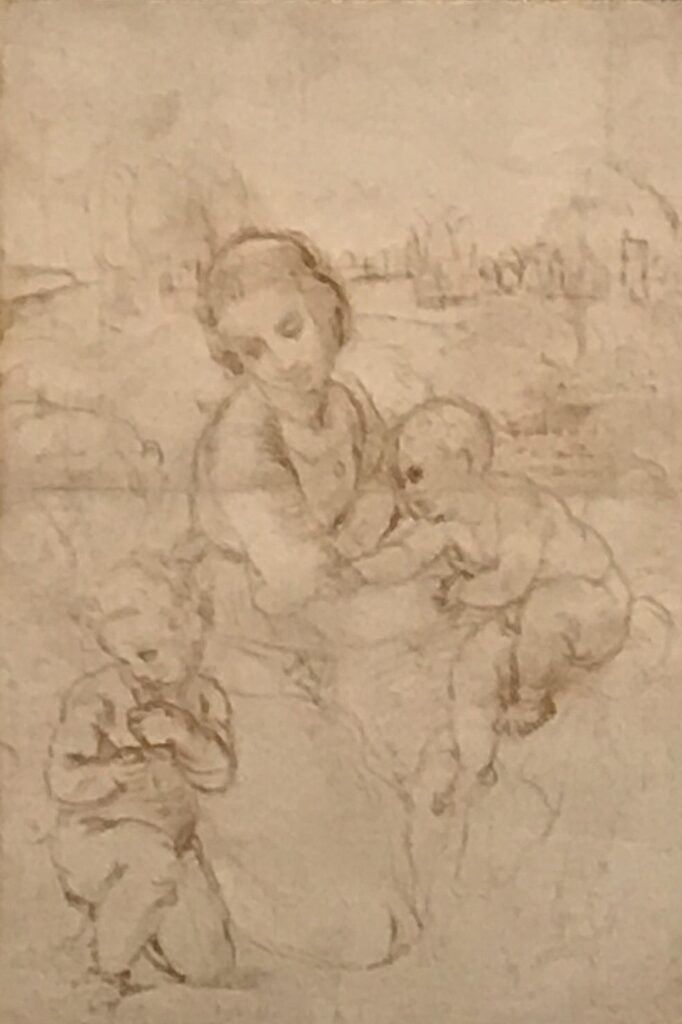
Far more variable in the line creation was the brush. Its transmission medium was animal hair, gathered in a holder and attached to a handy handle.
Depending on the texture, strength and shape of the brush tip and the amount of colorant absorbed, the stroke pattern varied.
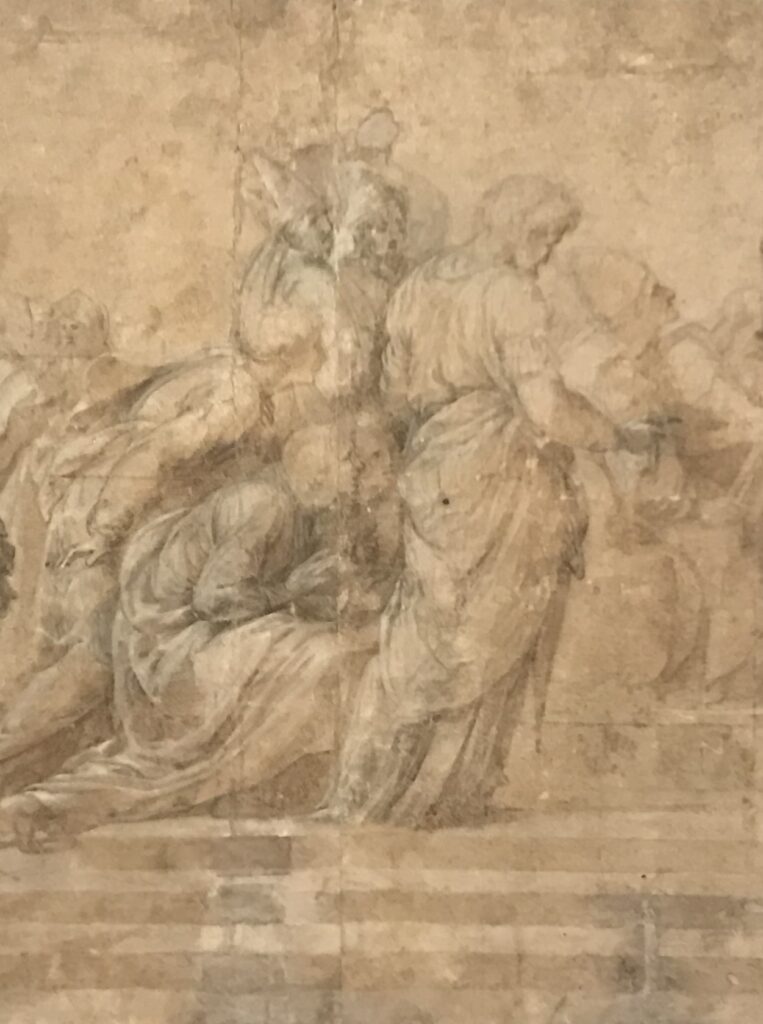
Drawing means
For working into light and dark, the artist could refer to a selection of media – charcoal, black chalk, light chalk, raddle and aqueous substances such as ink and and white lead.

Charcoal is one of the oldest natural drawing materials and is obtained by carbonizing small wooden sticks.
Its poor adhesion has advantages if you use it for preliminary drawing and then erase it completely. However, dipping the charcoal in oil delivered a lasting result. And the print on the paper was significantly darker after drying.
Another popular medium was black chalk.
Also called ‘stone chalk’, it is extracted from slate which is cut into square sticks. In its natural condition it often contains mineral elements which can make the line irregular.
With light chalk, contrast points were set, and with these white heightings the playing with light and dark was resumed.

Raddle, or better known as ‘red chalk‘ or also called ‘red ochre’, belongs to the mineral paints and is a soft mixture of clay and the iron oxide mineral hematite. Even cut into sticks, the material then could be used immediately. The that time natural ochre deposits offered a variety of shades, rangling from light orange-red to dark reddish-brown.
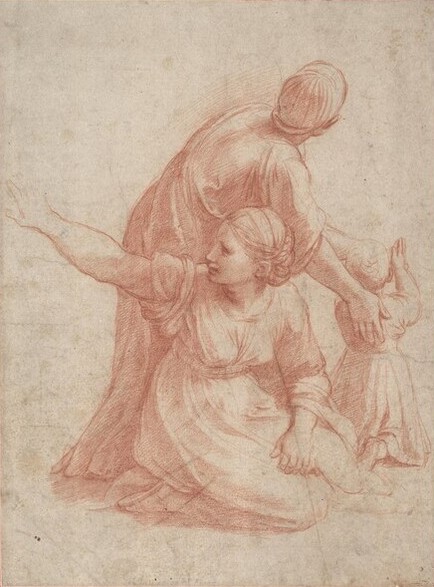
Moistening the chalk intensified the respective hue of the raddle. Diluted with water, the pigments could also be applied as a delicate wash.
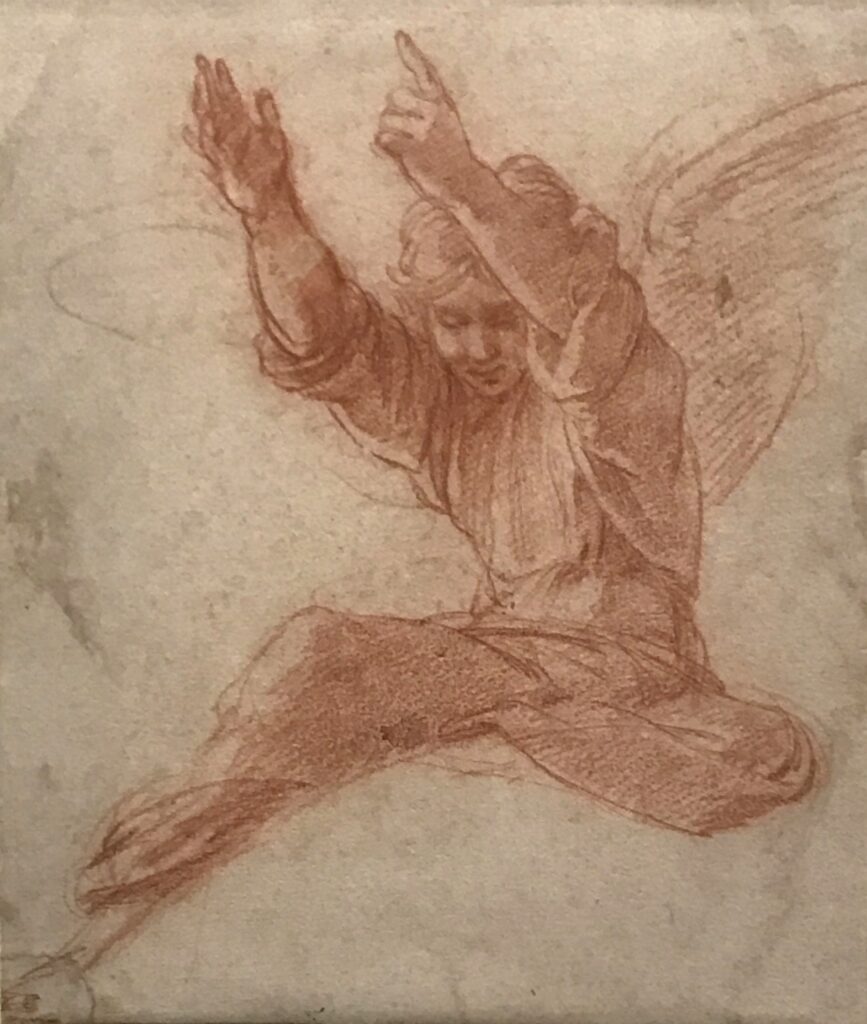
Finally with the drawing instruments feather and pencil, the aqueous means ink and white lead were used. The oldest inks were made from the soot of candles, then mixed with water and binders, giving off black paint. Made from the soot of burnt wood was the ink ‘bister’, and depending on the type of wood it had a different brownish tint. White lead, a basic lead carbonat, can be seen an important white pigment since these ancient times. Both, ink and white lead, could be diluted – or so-called ‘washed out’ – with water, with which again the Renaissance artist could define and perfect his drawing with light and shadow.
Drawing as an independent art genre
Originally, the familiarity with chalk, feather or brush was one of the essential prerequisites for any artistic activity. Drawing was therefore not an end in itself, but was seen as a basis and training to be successful in other genres.
The master drawings of the Renaissance ultimately paved the way for the recognition of drawing as an art form equal to painting and are still considered among the most famous works of this era.
